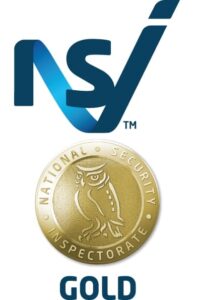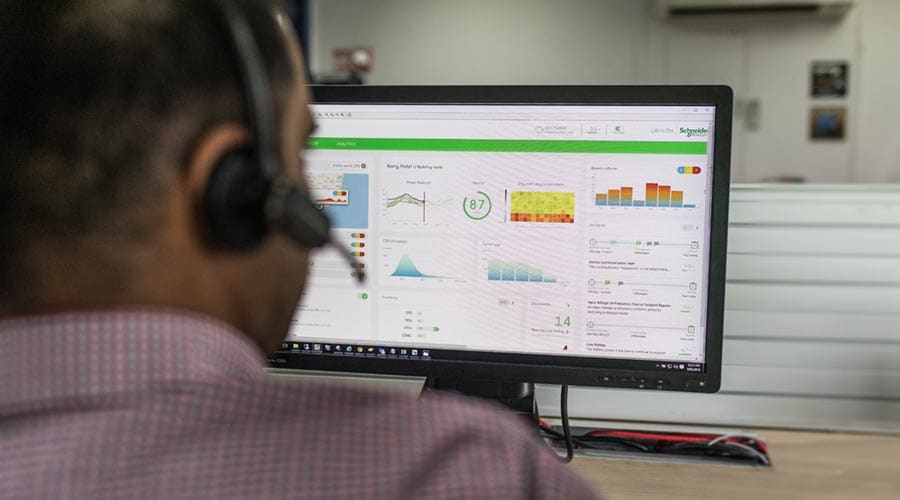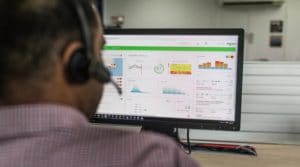Most businesses will have a small server room or IT server space in their offices, retail premises or branches . If the equipment there is not being monitored properly your IT devices and networks could fail which would be a serious threat to business continuity.
This is particularly true as businesses roll out cloud and internet telephony technology to provide services 24 hours a day, 7 days a week for all 365 days of the year.
Environmental conditions pose a threat to businesses IT systems
While businesses increasingly focus on the risk of cyber-attacks server rooms are also vulnerable from physical threats. There could be issues with equipment failure, such as overheating, or external factors such as a water leak that might cause IT devices to shut down. This is likely to result in loss of data or at least loss of time which means for most businesses means a loss of money.
Maintaining proper server room conditions relies on a number of different variables which include:
- Ensuring proper ventilation for cold air intake and hot air return
- Humidity of the room
- Verifying that proper airflow and temperature is circulating through your data racks
The need to monitor a range of environmental factors
A broad range of server room monitoring hardware, software and services are available to provide businesses with the systems that they require to monitor server rooms. The monitoring can cover temperature, humidity/dewpoint, fluid, airflow, smoke, power, intrusion and third-party devices.
For example, an air conditioning unit, which is vital to keep the temperature under control, if not properly maintained may break down. A faulty air conditioning unit can be a cause of too much humidity, which could result in condensation and in water dripping onto your hardware. To monitor these kinds of problems there are humidity sensors and leak rope sensors which provide early detection of fluid in your server room.
Conversely if the air in the server room becomes too dry there is a high risk of electrostatic discharge (ESD). Sometimes the heat generated can be so intense that extremely small plastic parts in sensitive electronic devices can melt, leading to a much shorter useful life. Again, this emphasises the need for a range of sensors to monitor the physical environment.
Human error often the cause of IT failure
Meanwhile, research relating to data centres has found human error is the cause of 60% of data centre downtime through accidents and mistakes. Mistakes that can be made by staff members could be server room or cabinet doors being left open which could leave equipment at risk of interference from others or affect the tempra. Door sensors can detect when doors have been left ajar ensuring any potential dangers are dealt with swiftly.
Therefore, it is worth companies large and small, investing in a combination of monitoring devices, sensors and rack access control. This way the environment of the server room can be managed and monitored but also there are restrictions on who actually has access to IT equipment minimising the risk of human error.
Power monitoring and protection will prevent IT downtime
If you are monitoring your server room and IT spaces properly you will be making your devices more energy efficient. For example, if the temperature is kept at the optimal level it will prevent spikes caused by an air conditioning unit switching on and off to keep a constant temperature for the IT equipment.
However, equipment to protect you against IT downtime caused by power surges or blackouts is also vital. To enable power monitoring and control within IT space intelligent power distribution units will be required. These devices distribute and manage electricity supply to computers, servers and networking devices and provide a central unit to control and distribute electricity across a server room.
Additionally, businesses can avoid costly power outages by having an Uninterruptible Power Supply (UPS) system to provide seamless transition between mains power failure and a battery backup.
- Immediately provide backup power during power failure to keep your business running
- Bridge the power gap until a standby generator is synchronised (if a generator is present)
- Protect against brownouts, power spikes, voltage dips, fluctuations and complete power failures
- Shut down a computer or server in an orderly manner
- Reduce downtime costs and protect critical equipment
- Protect against data loss; increasing user productivity.
The benefits of alerts to mobile devices and data at your fingertips
Ideally businesses should have data collected through real-time monitoring available at the touch of a button, rather than being distributed across systems.
If environmental or power issues are detected alerts are created which can be routed both to desktop and mobile teams. This allows the IT and facilities teams to have a lighter touch, and be smaller and more mobile.
Potentially this also means that many of the common power and environmental issues can be fixed remotely or by working with local staff, without a time-consuming site visit if the IT team is based in another building or you have outsourced the support work.
A comprehensive data centre infrastructure management software system (DCIM) is able to provide a holistic view of a number of server room’s performance so that power, equipment, and IT spaces are used as efficiently and effectively as possible. Global technology solutions company, Schneider Electric, has developed its Data Center Expert DCIM system that offers user-defined reports and graphs, and instant fault notification and escalation enabling you to assess issues that could adversely affect your IT systems.
Data Center Expert also creates a record of historical alerts from several appliances which can be accessed through one central database and custom reporting so you can save and schedule user-defined reports for ease of data collection, distribution and analysis.
If required, fully-hosted cloud systems that include server room monitoring services; power monitoring and management systems and facilities management integration are available.
Schneider Electric has cemented its domination in the real-time monitoring and power management market through its purchase of APC in 2007, a supplier of UPS and PDU devices. APC had previously acquired Netbotz in 2005 which had developed innovative real-time monitoring devices and a range of sensors.
Individual server rooms need monitoring
Aaron Kernaghan, Managing Director of Ecl-ips, an APC/Schneider Electric partner in the UK, has had experience of selling Netbotz products since 2003 and has seen the development of the APC products and Schneider Electric software since that time.
He observed that the biggest change recently has been the development of the cloud for data storage. There are now more large data centres filled with servers. Aaron said IT expertise and monitoring are generally concentrated on these sites. Although he said Ecl-ips has installed Netbotz devices in data centres, smaller server rooms are the places that really benefit from real-time monitoring and should not be ignored.
Therefore, if you are a SME owner, take time to consider if you are taking environmental and power threats seriously and ensure that your IT appliances are monitored and protected to ensure your business does not lose out through IT downtime.
This article originally appeared online in Business Matters magazine.



